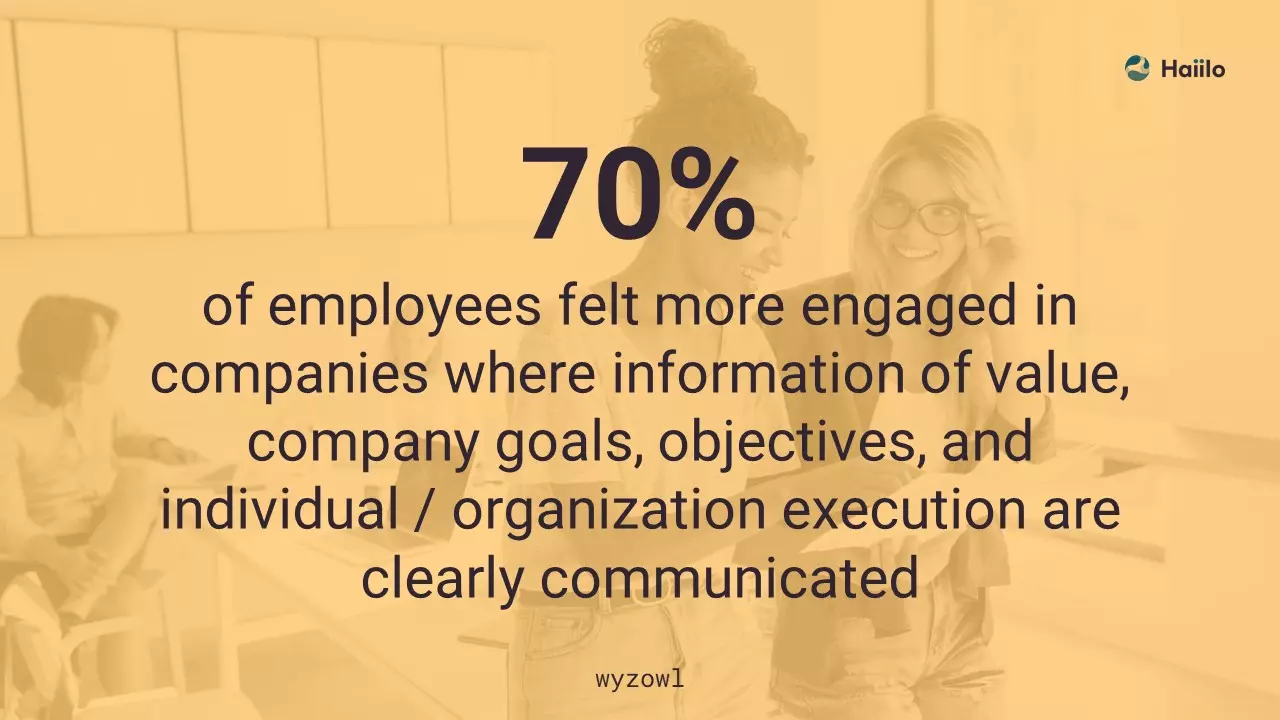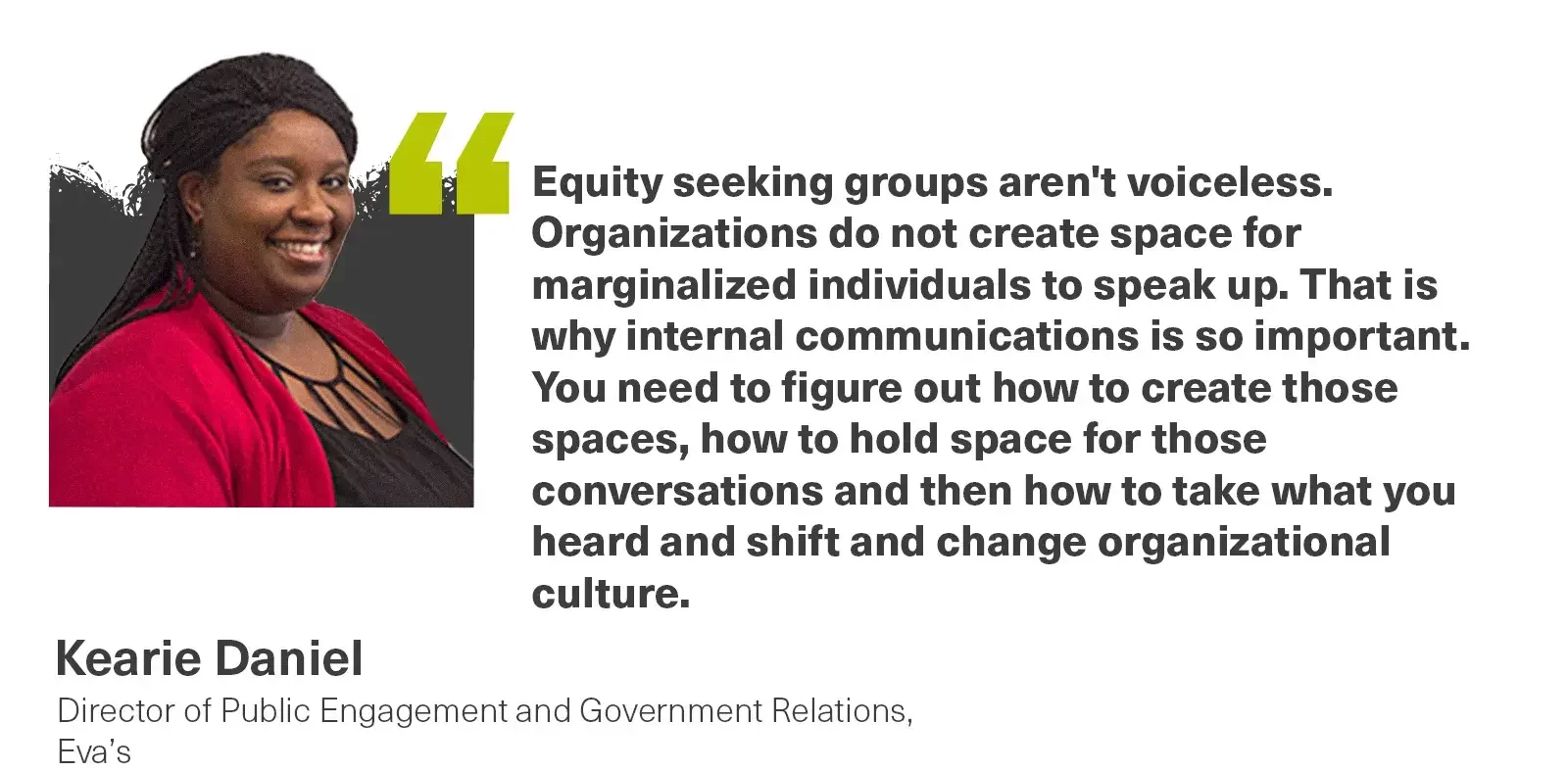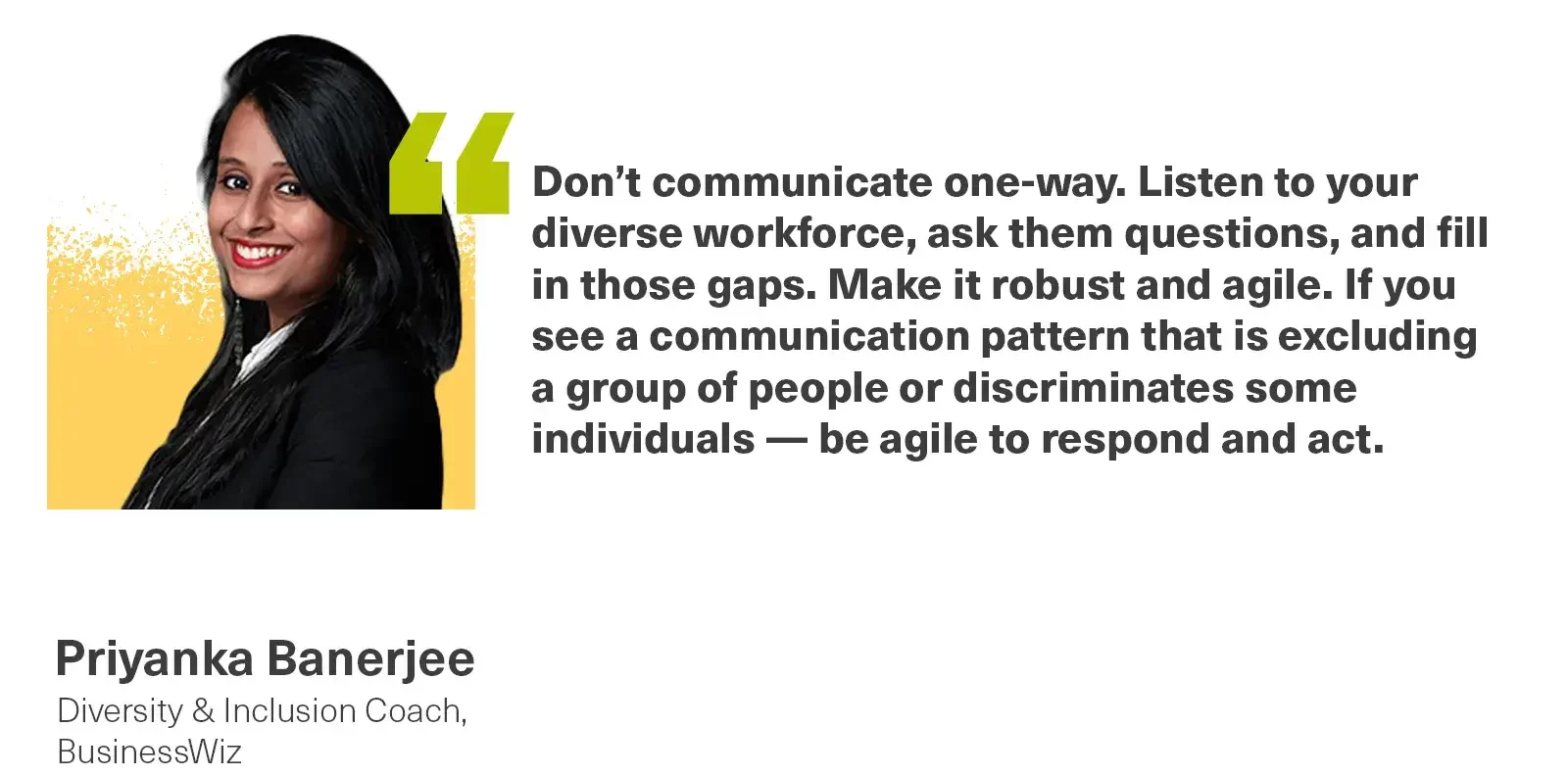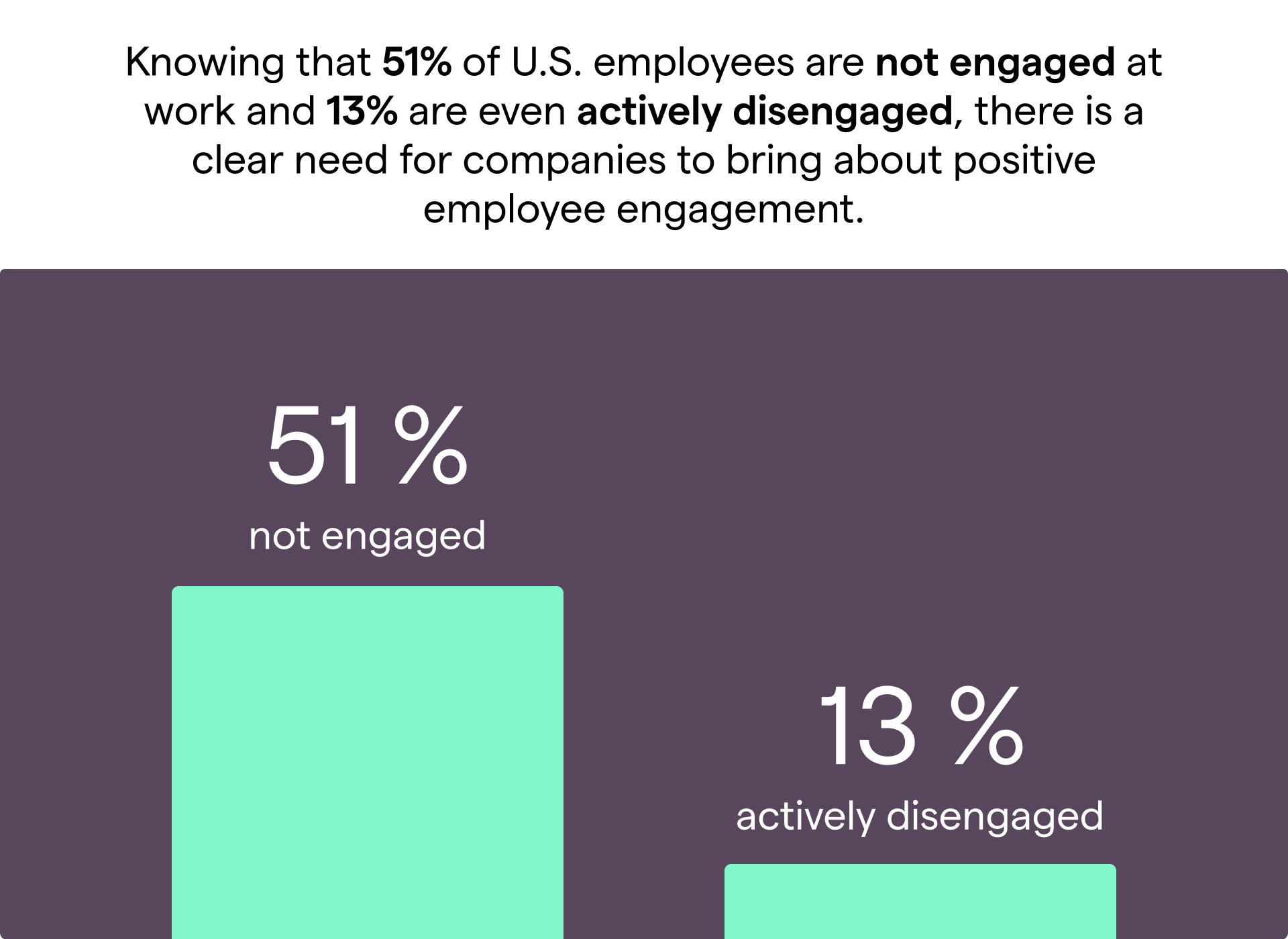Building a positive workplace culture has become one of the main priorities for organizations across the world. Due to the current pandemic, many employers are switching their focus on building workplace environments in which their employees can feel safe, engaged, inspired, and productive.
Moreover, 94% of executives believe strong company culture is key to business success.

Yet, according to research done by OC Tanner, the average score about employees’ satisfaction with their organizations’ culture, on a scale from 1 to 100, was only 65.
In this blog, we will go over the importance of building a strong workplace culture and the best ways for achieving that through proper employee communication, defining clear strategies, and aligning the workplace with the company’s mission, vision, and ultimate business goals.
The Definition of Workplace Culture
Culture is a broad concept which makes it quite difficult to define. Although extensive research exists relating to the topic of workplace culture, there is no generally accepted definition. Because every company is unique in its own way, there is no one-size-fits-all culture template that meets the needs of all organizations.
Moreover, workplace culture can manifest itself in a variety of ways, including leadership behaviors, employee relations, manager-employee relationships, communication styles, levels of transparency, and types of internally distributed messages.
In general, an organization’s culture defines the proper way to behave within the organization. It should consist of shared beliefs and core company values established by leaders and other internal communicators and then communicated and reinforced through various internal communication channels.
Building a positive workplace culture is only possible if you have a clear plan around how to communicate it to the entire workplace and align employees with the defined values.
Promote and reinforce your workplace culture with the right internal comms tools
Why Creating a Strong Workplace Culture Is Important
Many experts and industry leaders believe that workplace culture is what separates the most successful companies from the average ones.
This is because a positive culture in the workplace is essential for fostering a sense of pride and ownership among employees. When people feel proud to work for their employer, they work hard to create opportunities their organization can benefit from.

While positive workplace culture has many benefits, those organizations with poor cultures experience disengaged employees, high turnover, poor customer relations, and lower profits.
📚 Also check: Top 15 Employee Motivation Tips and Benefits
Let’s take a look into a few most important benefits of creating a good workplace culture:
- Talent attraction – Job candidates evaluate your organization and its climate. A strong, positive and well-communicated culture attracts qualified job candidates who fit your organizational culture. In a study from the Deloitte Global Human Capital Trends, ‘culture and engagement’ were the highest priority on the corporate agenda, and companies with the strongest cultures were much more likely to attract and keep talent.
- Employee engagement and retention – Culture has a big impact on employees’ satisfaction, engagement, and, therefore, their retention. Based on research, good workplace culture is proven to keep your employees engaged in their work.
- Business performance – Organizations with stronger cultures outperform their competitors financially and are generally more successful. Moreover, 92% of leaders from successful companies believe that workplace culture and financial performance are closely interrelated.
10 Ways to Build and Manage a Positive Workplace Culture
Now that you know the benefits of building a positive workplace culture, we will go over the best practices for building a motivated, engaged and satisfied workplace. Even though there is no one-size-fits-all strategy for building thriving workplace cultures, there are some must-follow steps. Let’s take a look at them.
Define and communicate company values
At the heart of organizations’ cultures are commonly shared values. Even though there are no right or wrong values, organizations need to be able to define which values they will emphasize and continuously communicate to the workforce.
Some of the most common organizational values include:
- Honesty
- Integrity
- Teamwork
- Excellence
- Innovation
- Accountability
- Trustworthiness
- Fairness
- Learning
- Customer experience
These beliefs and values determine what are the acceptable and encouraged behaviors among employees. However, just defining those core values means nothing if you don’t have a plan around how to communicate them to your employees.
Moreover, 62% of executives believe that “clearly defined and communicated core values and beliefs” are considered as factors that substantially contribute to a company’s success.

Set clear strategy and align employees with your mission and vision
According to research, 76% of employees believe that a well-defined business strategy helps cultivate positive workplace culture. Organizations that know what their goals are are much better at aligning employees with those goals as well as their company’s mission and vision.
Such alignment helps individuals and teams cultivate a sense of professional purpose. Organizations need to find ways to motivate their employees beyond quarterly quotas and annual performance reviews.
Many organizations, however, don’t know how to align their entire workplace to work towards the same goals and embed behaviors that match their core values.
Master internal communications
The way different stakeholders communicate within your workplace has a significant impact on the overall workplace culture. With the emergence of remote work and dispersed workplaces, improving digital employee communication has become one of the main priorities for many large enterprises.
Employees want to be informed, stay in the loop, and always know what is going on in their organization. They want to know where your company is headed. They want to be able to easily access critical company information wherever they are, at any time, from any device.

Hence, in the last few months, we have witnessed internal communications departments going through significant transformations as they are becoming important strategic business partners.
They are switching from a supportive functional role to a role with the responsibility to continuously improve employee experience in the workplace.
Drive collaboration and strong relationships
Strong relationships in the workplace can lead to an increase in effective communication which is the most important prerequisite for building and managing a positive workplace culture.
Today, departments can’t work in silos anymore. As jobs and departments highly depend on each other, organizations need to ensure easy collaboration and communication within and among different teams.
Moreover, 86% of employees and executives cite lack of collaboration or ineffective communication for workplace failures. Workplace cultures that operate on a one-way communication basis where employees can’t ask questions, make recommendations, reach people and find important information, have a long way to go in creating memorable employee experiences. Hence, promoting transparency and open communication between department heads, management, and team members is crucial.
Authentic and trusted leadership
Leadership is, without a doubt, the most important aspect of every workplace culture. Moreover, leaders are the ones who should continuously promote company values and act as role models to the rest of the organization.
But how leadership and the way they communicate affect your employees and the overall workplace culture?
According to research, 61% of employees cite trust in and with senior management as important to their satisfaction.

In the current work environment, leaders are trying to find new ways to motivate employees, advocate for them and drive passion and commitment. Even though leaders are an essential ingredient to a successful culture, there is still much room for improvement – 35% of employees do not trust senior leaders at their organization.
Traditionally, the role of leadership wasn’t so much to speak to their workforce and engage in company-wide conversations. Today, however, employee-centric employers require leaders to reach their internal audiences with authentic, inspiring, and motivational stories.
Approachable management
As you probably already know, managers are the most accountable for the variance in their employees’ engagement, satisfaction, and motivation. The way managers communicate with their teams is important for shaping a positive employee experience.
On the other side, only 57% of employees have a relationship with their direct manager that makes it easy to go to them with questions or concerns, and more than 1 in 4 employees do not trust their direct manager.

Managers need to be more approachable even today when they may have much less physical contact with their employees. They need to communicate frequently. Even though too often managers look at communication as a check-the-box type of activity, in reality, employees need and prefer to hear messages multiple times.
Unfortunately, many of them don’t have access to appropriate technology and tools to enable them to be more approachable and build stronger relationships with their teams.
Create a sense of purpose
According to previously mentioned research by OC Tanner, 71% of employees say their organization has a clear purpose, and 30% of employees say their organization’s purpose does not reflect what is important to them.
On the other hand, aligning employees to purpose is important for creating a successful workplace culture.
As explained in the research:
“People long to connect to something bigger and more important than themselves. So corporations need to connect the ‘why’ of their organization to the goals, longing for meaning, and desire to have an impact that lives inside every employee.”
The reality is that some organizations don’t have a purpose, other organizations have a purpose that doesn’t inspire employees, some organizations just don’t know how to communicate their purpose in a way that resonates with their employees.
Leaders, managers, and other internal communicators are the ones responsible for creating that sense of purpose among their employees by sharing inspiring stories, corporate responsibility activities, contributions to the community, and other important company milestones.
Encourage upward feedback and share of voice
The healthiest and most productive cultures are the ones in which employees feel free to share their voice, raise concerns, ask questions and express their needs. Yet many employers are neglecting the importance of opening the line to two-way workplace communications and upward feedback.
Instead, they are sending company-wide newsletters in which employees don’t have a way or ability to join the conversations around important topics. Communication is not only about informing employees, but about listening to them.

Consider implementing a modern employee communications solution that enables you to keep the entire workplace connected and helps managers and leaders to open the doors for everyone to speak up.
Show recognition and appreciation
Once your employees’ basic needs are met, genuine recognition for their output, talents, and contributions become very important. Recognition can be both formal and informal, and it is important for creating good team dynamics where peers and leaders praise each other and openly celebrate when great things happen.
Yet, 42% of employees believe it goes unnoticed when they reach a goal, and less than half of employees say they always feel appreciated at work.
Companies that know how to recognize those who are actively striving towards creating a positive workplace culture are much better at encouraging others to do the same. Those who make recognition public, collaborative and visible to the entire workplace are much better at exemplifying the message and motivating others to give their best.
Consider creating a communication channel designated for employee recognition and enable the rest of the employees to join the congratulations and praise.
Focus on diversity and inclusion
You can create a positive and inclusive workplace culture by welcoming individuals from all backgrounds and celebrating their differences. According to the Hays Asia Diversity and Inclusion report, improved company culture, leadership, and greater innovation were the top three benefits of diversity in the workplace.
Another survey shows that 47% of millennials are actively looking for diversity and inclusion when sizing up potential employers.
However, in order for the company’s diversity and inclusion strategy to be successful, you need to have a proper employee communication strategy in place.
💡 We’ve asked IC experts from different industries to share their best practices for communicating Diversity and Inclusion in the workplace. Check out what they had to say on the topic: How to Communicate Diversity and Inclusion with Authenticity — 10 Experts Explain.

How Can Leaders Contribute to Shaping Positive Workplace Culture
Leaders in successful and thriving companies live their cultures every day. They know how to communicate their cultural identities to employees and other stakeholders. When leaders are clear about their values and how those values define their organizations, they are much more likely to align the entire workplace to live by those values.
To create a positive workplace culture, leaders should be open and transparent. This requires frequent communication across the company’s formal and informal communication channels.
Sharing what is happening is not enough; leaders need to explain why to foster an engaging work culture.
This is even more important now when many organizations are going through constant change. Employees are more likely to embrace the change if they understand the motive behind it.
Today, CEOs are often the ones with the responsibility to direct, shape, and promote a positive work culture through frequent conversations and interactions with the workforce.
Here are just a few ways how leaders can participate in shaping a great workplace culture:
- Leaders should first evaluate current ways of interacting with the workplace. They should be authentic and more engaged in encouraging employees to share their voices.
- Leaders should congratulate and recognize those who make the biggest impact and those who demonstrate positive work habits.
- Leaders should start and promote dialogues across the company’s communications channels, so that company values are clearly articulated and kept front of mind.
- Leaders should also work with internal communications departments to create inspiring and creative messages and visuals displaying core company values.
10 Interesting Statistics About Workplace Culture
As mentioned earlier, company culture has a big impact on the organization’s ability to attract, engage, and retain talent. But let’s take a look into a few more interesting statistics that prove the power of workplace culture:
- 46% of candidates believe culture is very important in the application process, with a grand total of 88% of job seekers citing it as at least of relative importance.
- 15% of job candidates turned down a job offer because of the company’s culture.
- Employees that don’t feel comfortable giving upward feedback are 16% less likely to stay at their companies.
- Qualtrics reports that 60% of U.S. employees reported having a way to provide feedback about their own employee experience. But only 30% said their feedback is acted upon by their employer.
- Millennials are 22x more likely to work for a company with a high trust culture.
- Employees who say there’s a low level of respect between colleagues are 26% more likely to quit their jobs.
- More than 50% of executives say corporate culture influences productivity, creativity, profitability, firm value, and growth rates.
- 92% of CEOs report their organization is empathetic. However, only 50% of employees say their CEO is empathetic.
- Only 15% of CEOs and CFOs say that their corporate culture is where it needs to be.
- A whopping 58% of employees have left a job or would consider leaving one if they felt the culture was permeated by negative office politics.
15 Workplace Culture Survey Questions to Ask Your Employees
The best way to start improving and reshaping your workplace culture is by assessing the current state of your employees. Previously, we mentioned that your employees’ should be able to share their voice and express their feelings.
Using employee surveys is one of the fastest and most effective ways of collecting their feedback. Here are some workplace culture questions you can use in your survey:
- Do you know what our core company values are?
- According to you, how does this organization define “success”?
- How likely are you to recommend our organization to your friends and colleagues due to the culture?
- Do you feel heard and respected?
- Do you feel like your work is recognized and appreciated?
- Do you understand how your work contributes to the success of our company?
- Do you feel like you have a good relationship with your supervisor?
- How would you define leadership in this organization?
- Do you feel like leadership does a good job communicating with employees?
- Does your manager provide you with timely feedback about your work?
- Which aspects of the organization can be improved to make it a better place to work?
- Is your organization dedicated to diversity and inclusiveness?
- Is there a culture of teamwork and collaboration within the organization?
- Does your organization provide a safe working environment for all employees?
- Do you feel like the organization’s work is positively impacting the employees in the organization?
When sending your surveys, make sure that they are relevant to your audience. For example, your surveys may be different based on employees’ locations, languages, and the nature of their work. Additionally, make surveys accessible on your employees’ mobile phones to make sure that you don’t exclude your deskless and blue-collar employees.
Therefore, you should have an easy way to segment your internal audiences for a more personalized approach and higher engagement.
If you are looking for a modern employee communications technology that can enable your managers, leaders, employees and other stakeholders to stay connected, share inspiring stories, align with the ultimate business goals and keep employees well informed, schedule a Haiilo demo today.










